Instructional Series
Welcome to the English medium literacy instructional series teaching and learning resources for years 1 to 8.

- Gold
- Green
- Purple
- Blue
- Turquoise
- 4
- 3
- 2
- 1
- 7
- 5
- 6
- 4
- 8
- 3
- 1
- English
- Social Sciences
- Science
- Health and Physical Education
- Technology
- The Arts
- Mathematics and Statistics
- Non-fiction
- Fiction
- None
- Nature of science
- Living world
- Planet Earth and beyond
- Material world
- Nature of technology
- Physical world
- Geometry and Measurement
- Statistics
- Technological knowledge
- Use evidence
- Engage with science
- Critique evidence
- Gather and interpret data
- Articles
- Stories
- Poems
- Plays
Search results
153 items - Showing 11 - 20
-
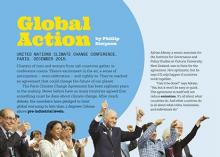
Global Action
by Phillip Simpson
This detailed article looks at the science and politics of climate change. It examines what global warming is, explores how scientists use computer modelling to predict the impact of climate change, and explains how scientific innovations in New Zealand could help reduce our agricultural emissions.
-
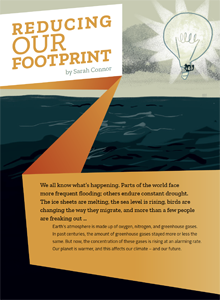
Reducing our Footprint
by Sarah Connor
This is the final article in a series that explores climate change. The first explains what it is; the second explores the difficulties in making predictions about it; and this, the third, looks at the ways people have responded to the challenge of climate change. It profiles four different organisations or people: an e-bike company, food recyclers, a scientist who’s developed an app for the agricultural sector, and a hemp farmer.
-

Solar Power in Tokelau
by Iona McNaughton
This report highlights the world-first achievement of Tokelau in using renewable energy sources (solar energy and coconut oil) for all its electricity. It explains why Tokelau decided to switch from using fossil fuels and includes comments from a Tokelau family that illustrate the impact of the change.
-

Changing Lives: The Omeo Story
by Lucy Corry
Kevin Halsall is an engineer and inventor who likes to solve problems. Over a four-year period, he designed and built the Omeo: a ground-breaking mobility device that gives people much greater freedom than a traditional wheelchair. In this article, Kevin discusses his motivation and design process, and his friend Marcus shares the impact the Omeo has had on his life.
-
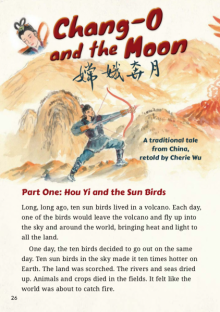
Chang-O and the Moon
retold by Cherie Wu
illustrated by Stan Chan
A traditional Chinese tale that explains the phenomenon of the “goddess in the moon”. This dramatic tale has two storylines, with the first story setting the scene for the main story.
Gold 2
-
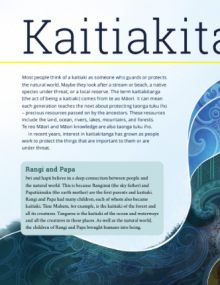
Kaitiakitanga
by Susan Paris and Daniel Hikuroa
Most people think of a kaitiaki as someone who guards or protects the natural world. Maybe they look after a stream or beach, a native species under threat, or a local reserve. The term kaitiakitanga (the act of being a kaitiaki) comes from te ao Māori. It can mean each generation teaches the next about protecting taonga tuku iho – precious resources passed on by the ancestors.
-
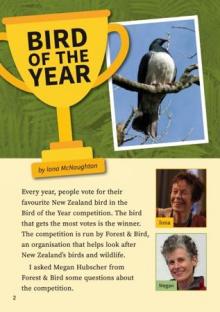
Bird of the Year
by Iona McNaughton
In this interview, Megan Hubscher of Forest & Bird talks to Iona McNaughton about the Bird of the Year competition – why it started and how it helps keep New Zealand native birds safe. Students can read about some of the past winners of the competition in an accompanying article, “And the Winner Is ...”
Gold 1
-
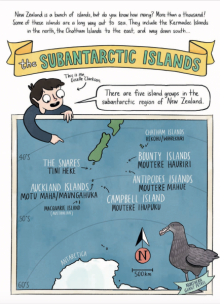
The Subantarctic Islands
written and illustrated by Giselle Clarkson
This visual text uses words and cartoon-style images to provide information about the five groups of islands that are found between New Zealand and Antarctica. The information is presented in a lively way, organised into sections that tell what and where the islands are, the weather they share, and their flora and fauna.
Information and tips for using comics in the classroom:
-
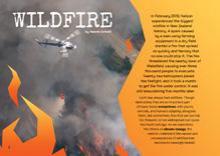
Wildfire
The article explores wildfires. It looks at what they are, what causes them, how they affect us, and how they are affected by the climate. In the process, it gives scientific explanations of some big ideas and processes, including climate change, carbon sinks, deforestation, adaptation, and feedback loops. The article ends by suggesting ways we can work together to reduce the risk of wildfires.
-
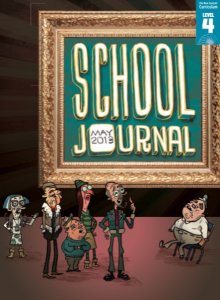
The Great Barrier Reef
by Sarah Wilcox
The Great Barrier Reef is very beautiful – and threatened. This report describes the Great Barrier Reef and explains what coral is. It also outlines the threats to the reef from climate change and its “evil twin”, ocean acidification.







 Literacy Online home
Literacy Online home
